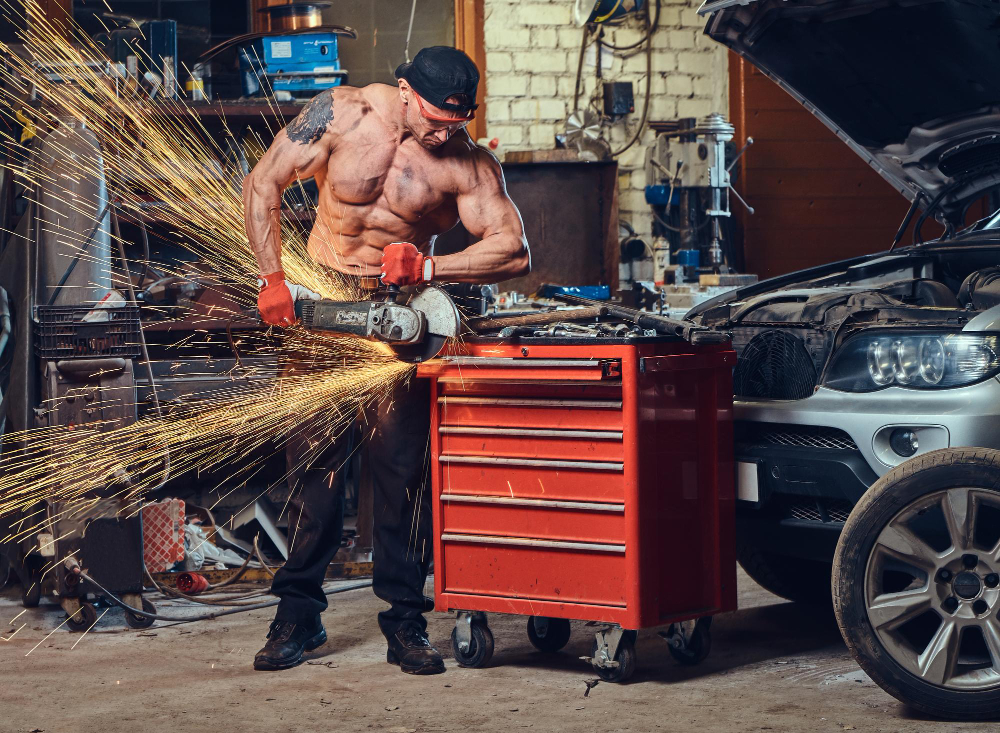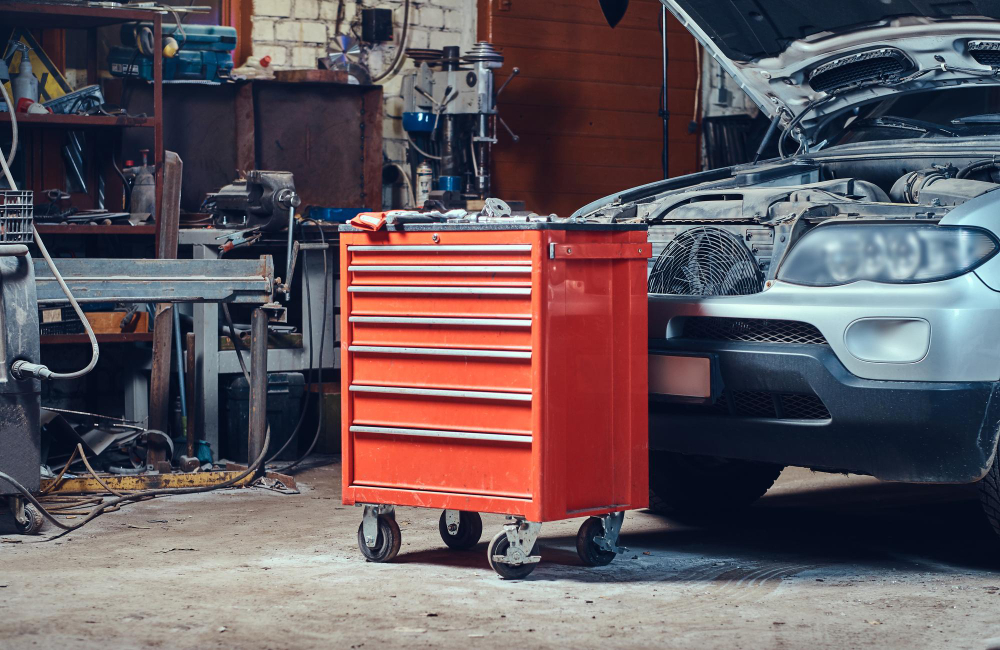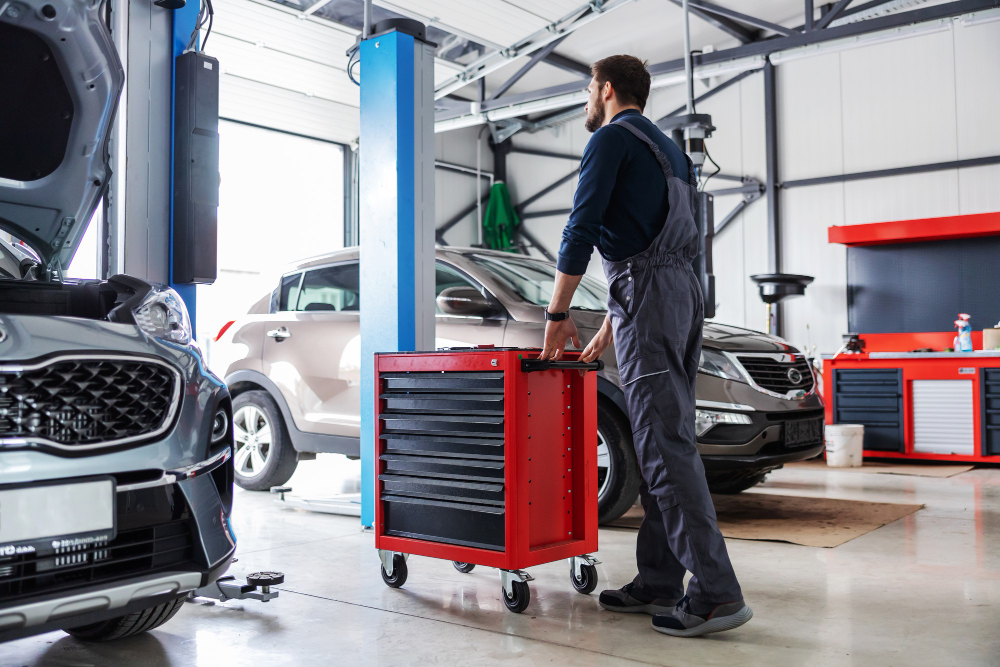Last updated on
Welding is a vital skill for numerous DIY enthusiasts in their garages, enabling them to fabricate, fix, and alter various metal projects. Thus, It is crucial to invest in the appropriate equipment to maintain a seamless and well-organized workflow.
One commonly disregarded yet indispensable item is a welding cart. Let’s explore the essential aspects to take into account when choosing a welding cart for your DIY projects in the garage.
What's Inside
What Is a Welding Cart Used for?

Before exploring the selection process, it is substantial to understand the purpose and advantages of a welding cart. A welding cart serves as a portable storage solution specifically created to keep your welding equipment, tools, and accessories organized.
Its main objective is to offer a convenient and effective method for transporting your gear within your workspace. With everything easily accessible, a welding cart eliminates unnecessary trips, leading to improved productivity and safety precautions.
Factors to Consider When Choosing a Welding Cart

One crucial aspect is the weight capacity of the cart. Evaluate the total weight of your welding equipment, including the welder, gas cylinders, and other tools. Choosing a cart for welding projects with a weight capacity higher than your combined load is crucial to avoid overloading and maintain stability when moving.
Material and durability are closely linked factors that directly affect the lifespan of your welding cart. Common materials, such as steel, aluminum, and occasionally plastic, are used.
Steel provides robust durability, while aluminum is lightweight and corrosion-resistant. The choice of material depends on your preference and the specific requirements of your projects.
Another aspect to consider is the size and dimensions of the cart. Take into account the available space in your garage and ensure it aligns with the cart’s measurements.
Consider the storage needs for your welding tools and accessories. A cart with adaptable shelves can offer great versatility, accommodating various equipment sizes and improving your organizational capabilities.
Mobility and Maneuverability

The cart’s mobility is determined by the type of wheels they have. Swivel wheels offer enhanced maneuverability, particularly in cramped areas, while fixed wheels ensure stability during cart positioning. The decision between these two options depends on your workspace arrangement and the level of mobility you need.
Just as crucial is the size and quality of the wheels. Durable and appropriately sized wheels guarantee stable and seamless movement, avoiding any unsteadiness or tipping.
When choosing a cart, consider the wheel quality and its capacity to bear the weight of your equipment. This directly impacts the ease of transportation and safety during welding operations.
Storage and Organization

Effective storage and organization are crucial for maintaining a tidy workspace. The quantity and arrangement of shelves on your welding cart are key factors in achieving this.
Take into account the tools and accessories you frequently use and choose a cart that provides adequate shelf space. Opting for adjustable shelves offers even more versatility, enabling you to customize the cart to accommodate various projects.
To enhance storage optimization, numerous welding carts are furnished with hooks, brackets, and holders. These additions offer designated spaces for cables, gas cylinders, and smaller tools, minimizing the chances of entanglement and potential harm. The option to personalize your cart’s storage arrangements amplifies your productivity and safety while undertaking welding assignments.
Portability Features
The design features of your welding cart have a direct impact on its portability. Handles and grips are crucial elements that enable convenient transportation.
Choose carts with well-designed ergonomic handles that make pushing, pulling, and maneuvering effortless. A comfortable grip reduces strain when moving the cart.
Cable organizers and holders, along with gas cylinder brackets, are extra features that enhance portability. These components ensure tidy cable management and secure placement of gas cylinders. Effective cable management reduces the risk of tripping and tangling, while properly secured gas cylinders prevent accidents during transportation.
Safety Considerations
Safety should always be a paramount concern in welding projects. When choosing a welding cart, consider the device’s stability.
A cart that is stable will prevent tipping, which can pose hazards during welding tasks. Opt for carts that have a robust construction and weight distribution that ensures stability, even when navigating corners or uneven surfaces.
Give priority to carts that are constructed using fire-resistant and heat-insulating materials. Welding procedures produce sparks and high levels of heat. Thus, getting a cart that possesses appropriate fire resistance capabilities can effectively prevent unintended fires, thereby ensuring the safety of your equipment and workspace.
Budget Considerations
Your budget is a key factor in the selection process. Welding carts are available in various price ranges, so it is substantial to establish your investment limit.
Find a balance between quality and cost. While it may be tempting to choose a cheaper alternative, keep in mind that a sturdy and long-lasting cart will ultimately serve you better.
Welding Cart Selection for Different DIY Projects
The selection of a welding cart is influenced by the type of DIY projects you undertake. For lighter tasks like automotive repairs, a compact cart with enough room for a smaller welder and essential tools may be suitable.
For medium-sized projects such as furniture welding, a cart with adjustable shelves to accommodate larger components may be necessary. For heavy-duty structural work, pick a heavy-duty cart equipped with sturdy wheels and ample storage for heavy equipment.
Maintenance and Care of Welding Carts
To guarantee the durability of your welding cart, perform regular maintenance. This includes cleaning the cart and applying rust prevention methods to prevent corrosion and extend its lifespan.
Conduct routine inspections, checking the wheels, fasteners, and overall structural integrity. By properly caring for your cart, you will optimize its usability and ensure safe operation during your DIY projects.
The Takeaway
Selecting the appropriate welding cart can solidly enhance your DIY projects in the garage. By taking into account aspects like weight capacity, material, mobility, storage, and safety features, you can find an ideal cart that suits your unique requirements and budget. A well-chosen welding cart not only boosts efficiency but also promotes a safer and more organized workspace, empowering you to confidently tackle your welding projects.




